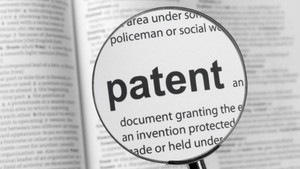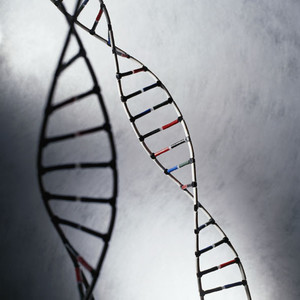The World Health Organization is still discussing several different options on how to name biosimilars, according to the recently published executive summary of its 57th Consultation on International Nonproprietary Names (INNs) for Pharmaceutical Substances.
The need for global harmonization with respect to the naming convention for biosimilars was highlighted and the possible use of a unique global ‘biological qualifier (BQ)’ for biosimilars was discussed. Two possible ways for obtaining and assigning an INN-BQ for biosimilars were presented:
- A company applies to the INN Programme for a BQ prior to submitting its biosimilar dossier to a drug regulatory authority (DRA). The INN Programme would publish the BQ once the DRA informs the INN of its decision.
- The DRA, following a marketing authorization application, requesting the sponsor to make an application to the INN Secretariat for a BQ, the INN Secretariat would provide the proposed BQ and the INN Programme would publish the BQ upon authorization of the bioimilar by the DRA.
The unique BQ itself is a random sequence of a specified number of letters to be chosen taking into account INN principles, i.e. stems, numerals, company names, common names, brand names and unacceptable visual formats would not be allowed. It was further highlighted that any codification scheme should apply to the drug substance and not the drug product despite it being the drug product that gets registered.
It is advised that a BQ would not be part of the INN and that selection and administration of a BQ would be a parallel activity by the INN Secretariat which would not impact on the INN Programme itself and would be distinct from INN nomenclature.
Representatives from Japan and Australia, where a biological identifier is in place or is being developed, agreed that a global system was desirable. The Australian drug regulatory authority, the Therapeutic Goods Agency (TGA), has devised a naming scheme involving the Australian Adopted Name of the reference product plus an identifier that would consist of the prefix sim– plus a three-letter code, preferably with the code assigned by INN/WHO [1]. However, in contrast, the European Medicines Agency (EMA) representative thought it unlikely that a BQ would be used in the European Union (EU).
In the EU, both the brand name and INN are used to identify the specific biological product, whether it is an originator product or a biosimilar. Hospira reports 99% identification of its biosimilar epoetin by brand name [2]. Pharmacovigilance history from Sandoz shows identification by brand names for its products to be 92% for filgrastim, 98% for epoetin and 99% for somatropin. European regulators report 96.2% product identification across three product classes (filgrastim, epoetin, somatropin) [3]. During a European Commission meeting held in October 2013, the majority of EU Member States said that they strongly support that biosimilars should be closely aligned with their reference product and that it is not problematic to identify the biological products, which are subject to adverse reaction reports [4].
The EU representative also noted that the main drive for the use of an additional code appeared to be added safety. However, with many biosimilars now appearing on the market, it could be confusing for prescribers as to what a biosimilar actually is, when confronted with multiple qualifiers.
The use of a three-letter code (or fantasy suffix), which has been proposed at previous WHO meetings [5], was considered to be somewhat limited and a four letter code was suggested would provide a far greater number of combinations. Alternatively, a coding system based upon the Anatomical Therapeutic Chemical (ATC) classification system was also suggested which could be useful.
The majority view was that ‘in principle’ the INN Secretariat should explore the practicalities of delivering a unique BQ for biosimilars. Four key issues were identified as requiring consideration: the nature of the BQ, what information it should convey, who makes an application for a BQ and who should have access to the BQ information. Finally, there should also be information on who is going to use the code and how. It should be made clear that any additional code administered by the INN Secretariat is a parallel activity to and distinct from INN nomenclature.
It was agreed that it would be useful to convene a smaller group to explore these issues and report back at the 58th INN Consultation, which took place at the WHO, Geneva, Switzerland, on 8–10 April 2014.
Related articles
GPhA proposes using manufacturer names to distinguish biosimilars
J&J adds its opinion to biosimilars naming debate
Biosimilars naming debate intensifies
WHO naming of biosimilars
References
1. GaBI Online - Generics and Biosimilars Initiative. Naming requirements in Australian biosimilars guidance [www.gabionline.net]. Mol, Belgium: Pro Pharma Communications International; [cited 2014 Apr 11]. Available from: www.gabionline.net/Guidelines/Naming-requirements-in-Australian-biosimilars-guidance
2. Hospira. Ramachandra S. What’s in a name? The importance of biosimilar nonproprietary names for healthcare innovation [homepage on the Internet]. 2013 Oct 16 [cited 2014 Apr 11]. Available from: http://www.hospira.com/Images/What's%20In%20a%20Name%20-%20Hospira%20Policy%20Paper%20-%20Oct%202013_32-92092_1.pdf
3. European Medicines Agency. Vermeer N, et al.Traceability of biopharmaceuticals in spontaneous reporting systems. 2012 May 25 [cited 2014 Apr 11]. Available from: www.ema.europa.eu/docs/en_GB/document_library/Presentation/2012/05/WC500127934.pdf
4. GaBI Online - Generics and Biosimilars Initiative. EU majority says same INNs for biosimilars [www.gabionline.net]. Mol, Belgium: Pro Pharma Communications International; [cited 2014 Apr 11]. Available from: www.gabionline.net/Biosimilars/General/EU-majority-says-same-INNs-for-biosimilars
5. GaBI Online - Generics and Biosimilars Initiative. Calls for biosimilars to have same INN at WHO meeting [www.gabionline.net]. Mol, Belgium: Pro Pharma Communications International; [cited 2014 Apr 11]. Available from: www.gabionline.net/Biosimilars/General/Calls-for-biosimilars-to-have-same-INN-at-WHO-meeting
Permission granted to reproduce for personal and non-commercial use only. All other reproduction, copy or reprinting of all or part of any ‘Content’ found on this website is strictly prohibited without the prior consent of the publisher. Contact the publisher to obtain permission before redistributing.
Copyright – Unless otherwise stated all contents of this website are © 2014 Pro Pharma Communications International. All Rights Reserved.








 0
0











Post your comment